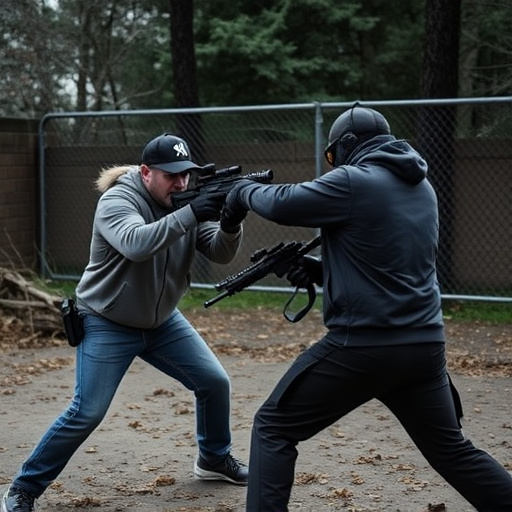College students considering self-defense stun guns must first understand their state's unique regulations, including age restrictions and permit requirements, which range from simple to stringent. They should also be aware of no-carry zones on campuses and comply with both state laws and university policies. Stun guns offer non-lethal protection but carry risks like temporary disabilities; proper training through mandated courses is crucial for safe handling and usage while adhering to local regulations.
In today’s digital era, self-defense options like stun guns are gaining attention among college students. This article explores the evolving landscape of concealed carry regulations, with a focus on self-defense stun guns specifically tailored to campus safety. We delve into understanding state laws, weighing the benefits and risks, and navigating crucial permit requirements, training mandates, and safety measures. Remember that as knowledge increases, so does the power to protect oneself.
- Understanding Concealed Carry Laws for College Students
- Benefits and Risks of Carrying Self-Defense Stun Guns
- Navigating Regulations: Permits, Training, and Safety Measures
Understanding Concealed Carry Laws for College Students
For college students considering self-defense options, understanding concealed carry regulations is crucial. Many states have specific laws governing the carriage of stun guns, and these rules often differ based on age and location. In general, students should first check their state’s definition of a stun gun to ensure it aligns with their chosen device. Some states may require permits or registration for certain types of self-defense tools, including stun guns, while others operate on a “shall issue” basis for concealed carry permits.
College students should also be aware of restrictions regarding where and how they can carry their stun guns. This includes understanding no-carry zones like classrooms, dormitories, and sports events. Additionally, regulations may vary within different campus areas, so students must familiarize themselves with local policies to ensure compliance with both state laws and university guidelines, thereby maximizing their safety while adhering to the law.
Benefits and Risks of Carrying Self-Defense Stun Guns
Self-defense stun guns have become a popular choice among college students looking to protect themselves on campus. One of the primary benefits is their ease of use; compared to firearms, stun guns require less training and handling practice, making them more accessible to those with minimal self-defense experience. They offer a non-lethal way to deter and incapacitate an attacker, providing peace of mind for students navigating potentially dangerous situations.
However, there are risks associated with carrying any self-defense tool. Stun guns have been known to cause temporary disabilities, such as muscle weakness or disorientation, in some cases leading to injuries caused by the user falling after activation. Regulations surrounding stun guns vary widely, and college students must be aware of local laws before considering this option for personal safety. Understanding the potential consequences and adhering to legal guidelines is crucial when contemplating self-defense stun guns as a solution for campus security.
Navigating Regulations: Permits, Training, and Safety Measures
Navigating Regulations: Permits, Training, and Safety Measures
When considering self-defense stun guns for college students, understanding local regulations is paramount. Different regions have varying laws regarding concealed carry permits, making it crucial to research before purchasing. Many jurisdictions require applicants to undergo comprehensive training courses that emphasize safe handling, storage, and usage of stun devices. These measures ensure responsible ownership while promoting public safety.
Safety should be the top priority for any student opting for a stun gun as a personal defense mechanism. Beyond legal compliance, users must familiarize themselves with proper techniques and protocols to deploy the device effectively in real-life scenarios. Regular practice sessions can significantly enhance readiness levels, empowering students to protect themselves confidently while adhering to local regulations.
For college students considering self-defense stun guns, understanding concealed carry regulations is paramount. Balancing personal safety with legal obligations requires knowledge of permits, training requirements, and safe handling practices. While self-defense stun guns offer a layer of protection, it’s crucial to navigate these regulations thoroughly to ensure both security and compliance. By staying informed and adhering to local laws, students can make informed decisions about carrying self-defense stun guns for peace of mind on campus.
